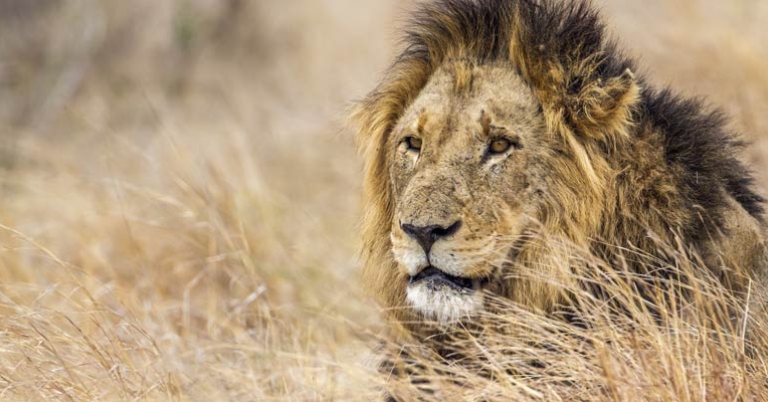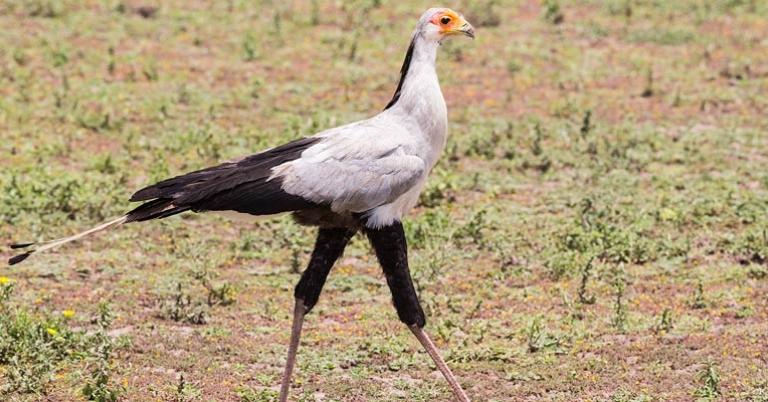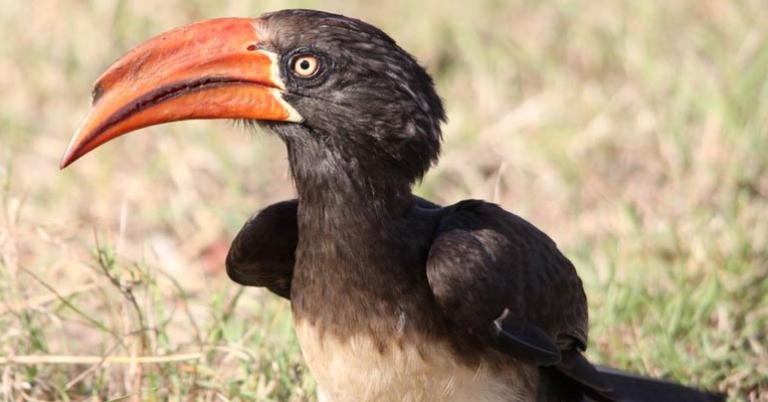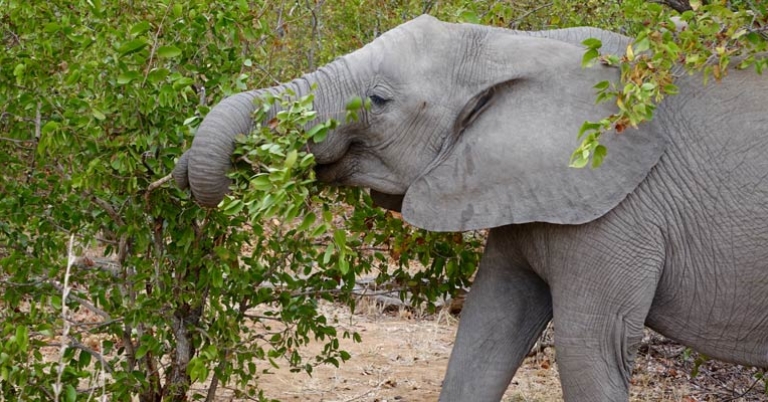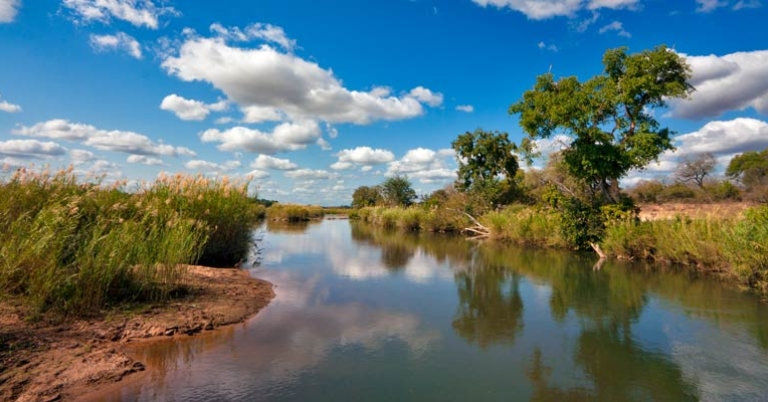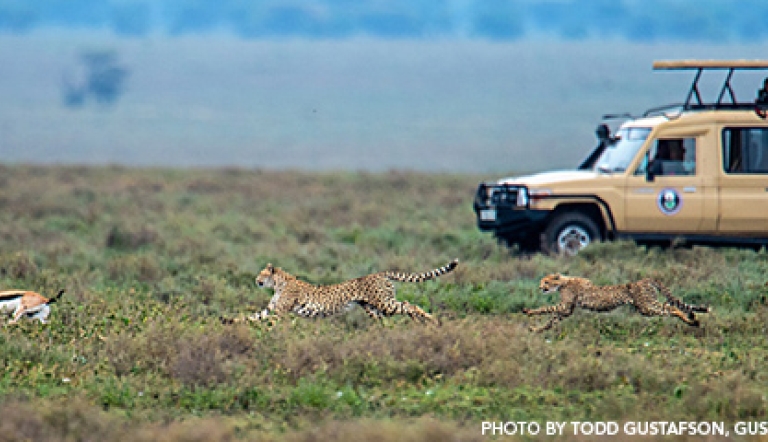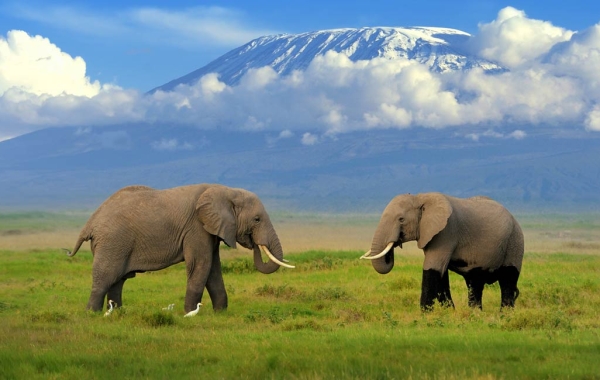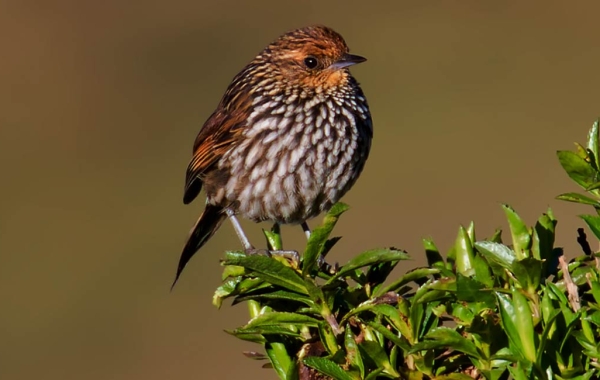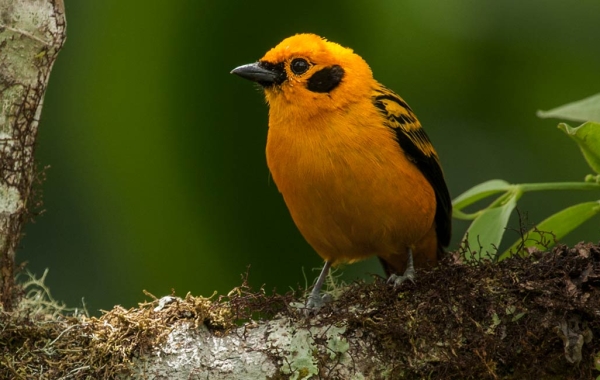South Africa | Birding and Wildlife Safari
About this trip
Immerse yourself in the natural wonders of South Africa, home to amazing scenery, iconic African wildlife, and more than 800 bird species. World-renowned habitats and biological diversity are the focus as you journey from the Highveld grasslands of Mpumalanga province to the cliffs and gorges of the Blyde River Canyon, and through transitional habitats before leveling out in the bush plains of Kruger National Park. Cap off the experience birding in the wetlands, grasslands and forests around Wakkerstroom. This translates to a superb range of avian species to be seen, including many regional and country-specific endemics.
Highlights
- Explore South Africa’s famed Kruger National Park, one of the continent’s largest game reserves, for the chance to spot nearly 500 bird species, as well as the “Big 5” — lions, elephants, Cape buffalo, leopards, and rhinoceros.
- Seek out Highveld grassland species such as Wing-snapping Cisticola, Eastern Long-billed Lark, and Denham’s Bustard at Verloren Vallei Nature Reserve.
- Hike the escarpment forest of Mount Sheba and look for area specialties like the Knysna Turaco, Southern Double-collared Sunbird, and Narina Trogon.
- Marvel at the stunning landscapes of Blyde River Canyon, the third largest canyon in the world, and spot species like antelopes, hippos, crocodiles, and more.
- Explore the grassland around Wakkerstroom and track down scarce inhabitants like Blue Bustard, Secretarybird, and Gray Crowned-Crane, plus the globally threatened Rudd’s Lark and Botha’s Lark.
Activity Level 3: Moderate
Participants should be able to ascend or descend 60 stairs consecutively, plus walk for at least 3 hours over some steep slopes, uneven, and potentially slippery surfaces without difficulty. Physical activities typically last for 3 or more hours at a time.
Land Cost
$4,995 - Mar 1, 2025 - Dec 31, 2026
$5,595 - Jan 1 - Dec 30, 2027
Book 8 travelers and 1 group
leader travels for free
What makes us different
Worry-free Planning & Travel
Sustainable travel
Custom-tailored trips
Marketing support and resources
Expert guides
Flight arrangements
Daily Itinerary
Print ItineraryEn route
Day 1Johannesburg
Day 2Mount Sheba
Day 3Blyde River Canyon
Day 4Satara, Kruger
Day 5Satara, Kruger
Day 6Skukuza, Kruger
Day 7Skukuza, Kruger
Day 8Berg-en-Dal, Kruger
Day 9Wakkerstroom
Day 10Wakkerstroom
Day 11Departure
Day 12Arrival Home
Day 13Pricing
Print PricingLand Cost
$4,995 - Mar 1, 2025 - Dec 31, 2026
$5,595 - Jan 1 - Dec 30, 2027
Book 8 travelers and 1 group
leader travels for free
What's Included
- Accommodations with private bathrooms
- Activities and meals as mentioned in itinerary
- Arrival and departure transfers based on individual flight schedules
- Bottled water or water refill station during transfers
- Carbon Offset
- Full time guide for the duration of your program
- Non alcoholic beverage with meals
- Private transportation and driver for the duration of the program
What's Not Included
- International airfare
- Items of personal nature
- Tips
- Travel Insurance
Pricing Details
Prices are valid for travel from Mar 1, 2025 - Dec 31, 2026. Holiday surcharges may apply.
Travel Info
Print Travel InfoEntry & Exit Requirements
U.S. citizens must have a valid passport to enter South Africa. Passports must be valid for at least 30 days after the date of departure from South Africa. As this requirement is subject to change at any time without notice, we recommend at least 6 months' validity.
A tourist visa is not required for visits up to 90 days.
South African law requires travelers to have two consecutive, fully blank visa pages in their passport upon arrival into South Africa. Travelers without the required blank visa pages will be refused entry into South Africa, fined, and deported at their own expense.
If you are not traveling with a U.S. passport, please check with the South African Embassy for the requirements based on your nationality.
Health Information
IMMUNIZATIONS
The Centers for Disease Control recommends that all travelers be up to date on routine vaccinations such as measles-mumps-rubella (MMR) vaccine, diphtheria-pertussis-tetanus vaccine, varicella (chicken pox) vaccine, and your yearly flu shot before every trip.
There are no vaccinations required for entry into South Africa, unless you are traveling from a country where yellow fever transmission is a risk (including spending 12 or more hours in an airport located in a country with yellow fever transmission).
Though not required, the CDC recommends vaccination against hepatitis A, hepatitis B, and typhoid for most unvaccinated travelers to South Africa.
Please consult your physician for additional information and recommendations based on your individual circumstances.
MALARIA
The CDC warns that travelers to certain areas of South Africa—particularly in the low-altitude areas of Mpumalanga Province (including Kruger National Park), Limpopo Province, and north-eastern KwaZulu-Natal Province—may be at risk for exposure to malaria. Risk is highest from October through May.
Malaria is caused by a parasite found in Anopheles mosquitos, which are active from dusk until dawn. Prevention is twofold: the use of anti-malarial drugs and the prevention of insect bites. If your itinerary includes areas where malaria is present and you choose to use an anti-malarial drug, as recommended by the CDC, see your physician for a prescription.
To protect against mosquitos, the CDC recommends that you cover exposed skin with lightweight, long-sleeved shirts and pants, consider treating clothes with permethrin, and use an insect repellent containing an EPA-registered active ingredient like DEET, picaridin, or oil of lemon eucalyptus (OLE). Apply sunscreen first, followed by the repellent, ideally 20 minutes later.
Be careful when applying products containing DEET, as it can damage or dissolve certain synthetic fabrics as well as plastic, rubber, vinyl, or elastic materials, such as those used in camera equipment, binoculars, phone cases, sunglasses, or watches. Additionally, some research suggests that when DEET and picaridin enter local waterways, they can be harmful to amphibians and other wildlife. When selecting a repellent, it is ultimately up to each traveler to weigh the risks and benefits of different options, keeping in mind both environmental factors and the importance of protecting against illness.
OTHER INSECT-BORNE ILLNESSES
In addition to malaria, the CDC advises that travelers may be at risk for other illnesses transmitted by insects, such as chikungunya, African tick-bite fever, and others. Travelers are advised to protect themselves against insect bites using the measures noted above.
After spending time outdoors in grassy or wooded areas, the CDC recommends showering and conducting a full-body check for ticks. If you find a tick attached to your skin, safely remove it as soon as possible.
Wildlife
Follow all instructions from your guides regarding wildlife. Animals may become aggressive to protect themselves, their young or their mates, or to guard a food supply. Do not make sudden movements either toward or away from them, as this may be interpreted as threatening or territorial.
Avoid stray dogs, as they may carry rabies. In the unlikely event of being bitten or scratched by a dog or other mammal, clean the wound and control bleeding. Seek medical attention immediately.
SUN EXPOSURE
The effects of the sun can be damaging to the eyes and skin. Spending time outdoors exposes you to the sun’s harmful ultraviolet (UV) rays, even on cloudy days. To protect yourself from the sun, use a broad spectrum sunscreen of at least SPF 15, protect skin with clothing, wear a wide-brimmed hat and sunglasses, and drink plenty of fluids.
Respiratory Illness Protocols
Please review our Respiratory Illness Protocols page, which explains our policy and procedures if you or another traveler should develop symptoms of a respiratory illness during your trip. Your participation in a Holbrook Travel program indicates that you are in agreement with these protocols.
Resources
Print ResourcesPacking Recommendations
Everyone has personal preferences when it comes to packing; for this reason, the information below is offered as a general guide and not a definitive list. You know yourself best: Use your discretion and pack what you think will serve you, based on your personal preferences and specific itinerary.
You may find many of the items below in our Gear Store.
CLOTHING
Casual, comfortable clothing is suitable for most activities in South Africa. You may wish to bring a slightly nicer outfit or two (eg sundress, polo shirt) if your itinerary includes dinners out or more formal activities.
Bring enough clothing suitable for the length of your program. If you prefer to pack light, note that many hotels offer laundry services (at additional cost).
Pack clothing that can be worn in layers to adapt to weather changes throughout the day. Remember that seasons in the Southern Hemisphere are reversed from those in the north. Hence, July and August are the middle of South African winter and mid-summer hits in December and January. South Africa’s rainy season is October to April, but it can rain at any time.
Temperatures vary by region as well as season. Cape Town and the Garden Route have a Mediterranean climate, moderated by ocean winds, while Johannesburg and Pretoria are atop a plateau and have a comfortable, spring-like climate despite their proximity to the equator.
Bring clothes in neutral or muted colors such as green, khaki, brown, or gray. We recommend that you avoid wearing bright colors or white as they can easily be spotted by animals. In addition, blue is particularly attractive to certain insects and should be avoided.
Army-style camouflage clothing is illegal in South Africa.
Locals tend to dress conservatively. Revealing tank tops and shorts/skirts cut above the knee are typically not recommended in towns.
- A combination of short-sleeved and lightweight, long-sleeved shirts for sun and insect protection
- Shorts and/or skirts
- Lightweight, quick-drying long pants for sun and insect protection; warmer long pants if your itinerary visits colder areas
- Undergarments
- Sleepwear
- Lightweight jacket or sweater/sweatshirt (or heavier weight if visiting high-elevation areas)
- 1-2 bathing suit(s) for the beach, if applicable, plus many hotels have pools
- Socks – Bring extra pairs.
- Shoes – Consider your specific itinerary when choosing footwear. For most programs, you’ll likely want at least one pair of comfortable, closed-toe walking or hiking shoes suitable for forest hikes and walking over cobblestones or other uneven terrain. Sturdier hiking boots may be appropriate for more active itineraries. In addition, many participants opt for a pair of sturdy sport-strap sandals (e.g. Keens, Tevas, or similar) and/or casual flip-flops or sandals. If you’re visiting the beach, you may also want a pair of aqua socks, reef walkers, or water shoes.
- Lightweight rain jacket, hooded poncho, and/or windbreaker
- Visor or wide-brimmed sun hat
- Bandana, scarf, or neck gaiter
Personal Toiletries
Pack toiletries based on your personal preferences and habits. Below are just a few recommendations to keep in mind.
- Shampoo, conditioner, lotion, deodorant/antiperspirant , etc. – If possible, avoid strong fragrances if you are sensitive to insect bites (and to be considerate of you fellow travelers).
- Soap and washcloth or a small, quick-drying microfiber towel – Washcloths are not standard in all hotels. If you normally use a washcloth, you may wish to bring one from home.
- Hairbrush, comb, hair ties, shower cap. Some hotel rooms provide a hair dryer, but you may wish to bring one from home.
- Toothbrush and toothpaste
- Razor
- Ear plugs, especially if you are a light sleeper
- Personal hygiene products
- Insect repellent with DEET or picaridin (see note below about treating clothing with permethrin)
- Sunscreen and lip balm with SPF – If you’ll be in the ocean, we recommend reef-safe sunscreen.
- Aloe vera gel
- A travel pack of tissues – also useful as napkins or toilet paper if needed
In addition to your personal toiletries, it is useful to pack a small medical kit, which you can easily prepare. Helpful items might include: bandages, antihistamine, a pain reliever, motion sickness and/or altitude sickness medication (if you are prone to either), anti-diarrhea medicine, individually wrapped pre-moistened towelettes and/or hand sanitizer, antibiotic ointment, anti-fungal cream, moleskin for blisters, eye drops, tweezers, a mini sewing kit, and an extra pair of disposable contact lenses or eyeglasses if you wear them.
Days before you leave home, you may wish to consider spraying any clothing, socks, and shoes that will be worn in lowland, tropical sites with permethrin, an anti-parasite medication, to repel irritating pests and prevent the spread of disease. A recommended brand is Sawyer. Carefully read all instructions before use. Please note permethrin is highly toxic to cats and fish, and some aerosol products may be harmful to birds. Side effects may include minor itching, burning, or redness. You may want to use a laundry marker to label and keep track of which socks are permethrinized. Only one application per item is necessary; permethrin on treated clothes remains effective through several washings. Permethrin should NOT be applied directly to skin.
Miscellaneous
Remember to pack valuables such as your passport, cash/credit cards, and medications in your carry-on luggage.
- Passport and photocopies of all travel documentation
- Personal insurance card and travel insurance information
- Money – ATM/credit card, traveler's checks, and/or cash; small bills in good condition are recommended
- Prescription medicines (if applicable), with a copy of the prescription
- Yellow fever certificate (if required; only if arriving from a country where yellow fever transmission is a risk)
- Sunglasses with strap
- Small day pack for hikes and excursions
- Flashlight and/or head lamp
- Travel alarm clock or inexpensive waterproof wristwatch with alarm – Not all hotels provide alarm clocks.
- A pocket calculator or phone to assist with conversions and currency exchange
- Binoculars with lens cleaner
- Camera and related equipment, such as charger, lenses, and extra memory cards
- Reusable water bottle
- Non-perishable snacks
- Pocket-knife or multipurpose tool – Pack in your checked luggage.
- Zip-top style bags – useful for packing toiletries, sorting clothing, storing damp or muddy shoes, or as a dry bag for protecting electronics
- Notepad or travel journal and pen
- Music or reading material for down time, long bus drives, or on the airplane, and a portable bright light to read by
- Collapsible walking stick with rubber tip
- A small quantity of laundry detergent if you’ll be washing clothing by hand
- Money belt
- Voltage converter, plug adapter, and chargers for electronics

Questions
For more information, contact us at 800-451-7111 or email travel@holbrooktravel.com.



